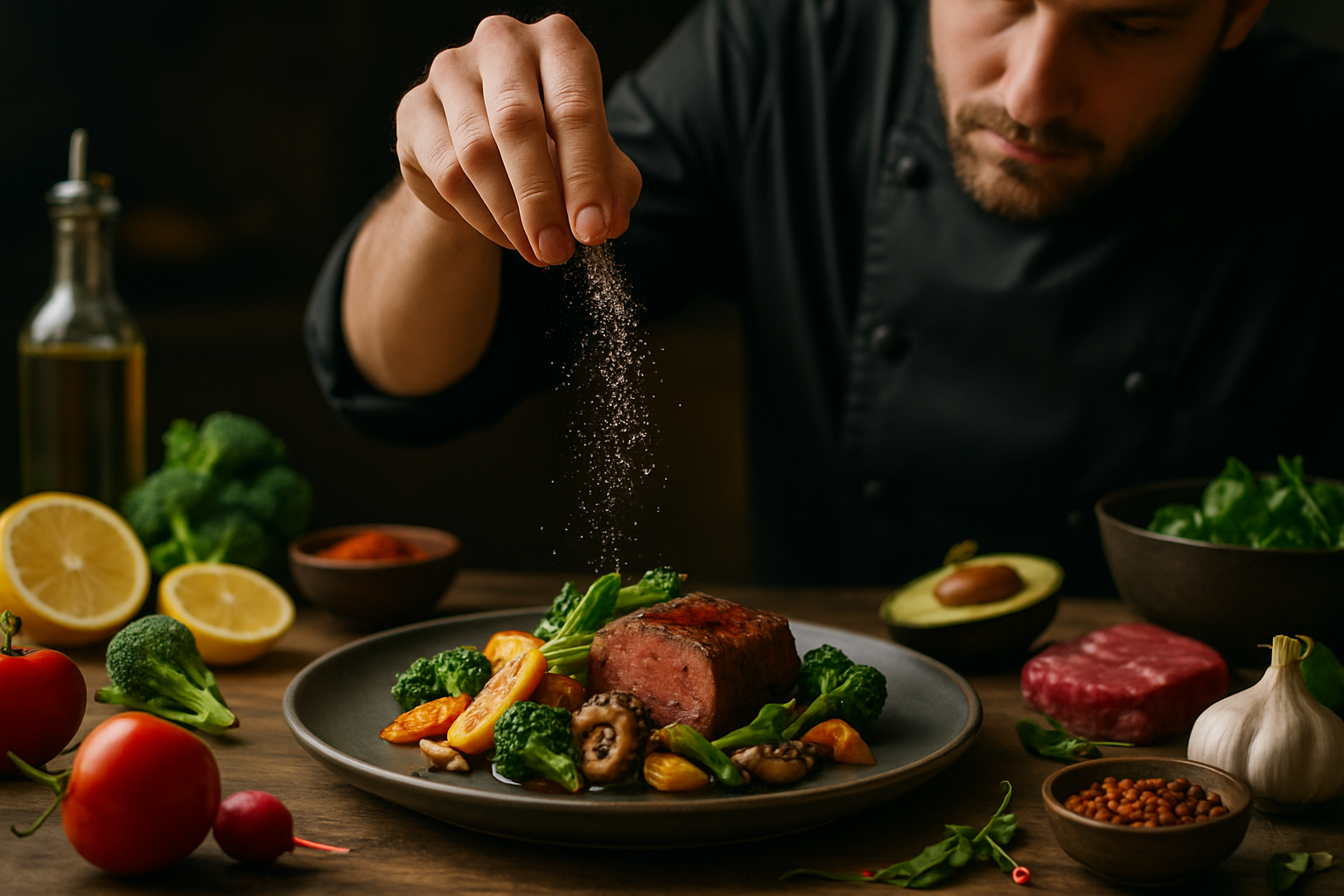Culinary Alchemy: Transforming Ordinary Ingredients into Extraordinary Dishes
Dive into the fascinating world of culinary alchemy, where everyday ingredients undergo magical transformations to create extraordinary dishes. This article explores innovative techniques and creative combinations that elevate simple components into gastronomic marvels. Get ready to unleash your inner kitchen wizard and discover the art of turning the ordinary into the extraordinary.

Texture Transformation Techniques
Texture plays a crucial role in culinary alchemy, often transforming familiar ingredients into entirely new experiences. One popular technique is spherification, which turns liquids into caviar-like spheres that burst with flavor in the mouth. This process involves combining a flavored liquid with sodium alginate and dropping it into a calcium chloride bath, creating a thin gel membrane around the liquid. Another texture-altering method is foam creation, which uses stabilizers and emulsifiers to turn liquids into light, airy foams that add a new dimension to dishes. Dehydration is also a powerful tool, concentrating flavors and creating crispy textures from fruits, vegetables, and even meats. By mastering these techniques, home cooks can add surprising elements to their dishes, turning a simple tomato into a burst of intense flavor or transforming a fruit juice into a light, ethereal foam.
The Art of Infusion and Extraction
Infusion and extraction techniques allow cooks to impart complex flavors into various mediums, creating unique taste experiences. Cold infusion, for example, involves steeping ingredients in cold liquid for extended periods, resulting in cleaner, brighter flavors compared to traditional hot infusions. This method is particularly effective for delicate herbs and flowers. Sous vide infusion uses precise temperature control to extract flavors without altering the texture of the ingredients. This technique is perfect for creating flavored oils, spirits, and even customized butter. Another innovative approach is rapid infusion using a cream whipper, which pressurizes ingredients to quickly infuse flavors into liquids. This method can create complex, layered tastes in minutes rather than hours or days. By mastering these infusion techniques, home cooks can create their own signature flavored oils, spirits, and other ingredients to elevate their culinary creations.
Molecular Gastronomy at Home
Molecular gastronomy, once confined to high-end restaurants, is now accessible to home cooks. This scientific approach to cooking explores the physical and chemical transformations of ingredients during the cooking process. One simple technique is using agar-agar to create unique gels and jellies with various flavors and textures. Another approachable method is creating flavored “caviar” using sodium alginate and calcium lactate, allowing cooks to add bursts of flavor to their dishes. Experimenting with liquid nitrogen can lead to instant ice creams and sorbets with incredibly smooth textures. Even simple techniques like using transglutaminase (meat glue) can help home cooks create interesting meat presentations or vegetarian alternatives. By incorporating these molecular gastronomy techniques, home cooks can add an element of surprise and innovation to their meals, turning everyday ingredients into conversation-starting dishes.
Fermentation and Preservation Alchemy
Fermentation and preservation techniques offer another avenue for transforming ordinary ingredients into extraordinary flavors. Lacto-fermentation, for instance, can turn simple vegetables into complex, tangy pickles with probiotic benefits. Koji fermentation, a Japanese technique using Aspergillus oryzae mold, can transform grains and legumes into umami-rich seasonings and condiments. Dry-aging meats at home is becoming more accessible, allowing enthusiasts to develop intense flavors and tender textures in their proteins. Even simple preservation methods like salt-curing can dramatically alter the flavor and texture of ingredients, turning fresh fish into delicacies like gravlax or bottarga. By exploring these fermentation and preservation techniques, home cooks can create unique, long-lasting ingredients that add depth and complexity to their culinary repertoire.
Culinary Alchemy Tips & Facts
• Use a vacuum sealer to infuse fruits with different flavors rapidly
• Experiment with edible flowers to add unexpected floral notes to savory dishes
• Try using ultrasonic waves to create unique emulsions and infusions
• Explore the Maillard reaction to develop complex flavors in various ingredients
• Use liquid nitrogen to instantly freeze herbs, creating a unique garnish that melts on the plate
In conclusion, culinary alchemy opens up a world of possibilities for home cooks and professional chefs alike. By understanding the science behind flavor pairing, mastering texture transformation techniques, and exploring innovative methods of infusion and extraction, anyone can turn ordinary ingredients into extraordinary culinary experiences. The key is to approach cooking with curiosity, creativity, and a willingness to experiment. As you embark on your own culinary alchemy journey, remember that the most exciting discoveries often come from unexpected combinations and techniques. So, don your chef’s hat, grab your metaphorical wand, and start creating magic in your kitchen!





